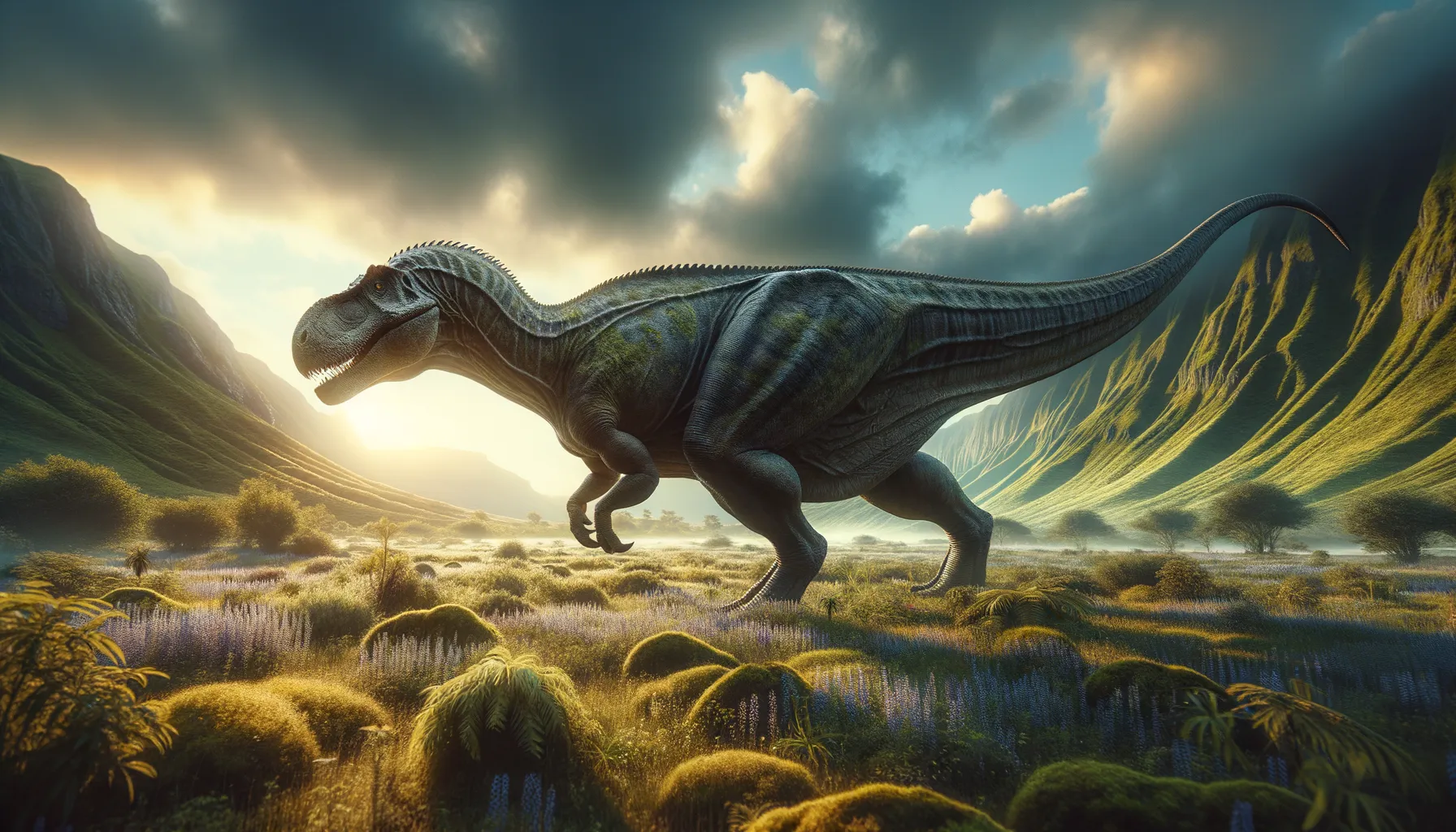
Cruxicheiros
A mighty giant of the Jurassic landscape.
Period
Jurassic
Length
About 9 meters in total length.
Height
Approximately 2 to 3 meters tall at the hip.
Weight
Estimated to be around 500 to 700 kilograms.
Cruxicheiros was a large theropod dinosaur known for its robust build and distinctive limb structure. Living in the Jurassic period, it roamed the regions that are modern-day England. Though not the fastest predator, it possessed a formidable presence with strong muscles and a heavy-set body. Its discovery added valuable insights into the diversity and evolution of theropods in Europe during its era.
Diet
Cruxicheiros was a carnivorous dinosaur. It primarily fed on other smaller dinosaurs and prehistoric mammals. Its diet consisted of both scavenging and active hunting.
Hunting
Cruxicheiros likely used its size and strength to overpower prey. It relied on short bursts of speed and its massive jaws to catch and kill its targets.
Environmental challenges
During the Jurassic period, Cruxicheiros faced challenges such as fluctuating climates and changing habitats. Predation pressures from other large theropods and increased competition for resources were also significant. The dynamic environment necessitated adaptability and strategic hunting strategies. Food scarcity due to ecological shifts might have also affected its population dynamics.
Speed
Relatively slow, typical for large theropods.
Lifespan
Estimated to be around 20-30 years.
First discovery
Discovered in the Oxfordshire region of England in 2008.
Fun Facts
- Cruxicheiros is a dinosaur whose name means 'cross hand' because its fossils were found near a place in England called Cross Hands Quarry.
- This dinosaur lived in the Middle Jurassic period, around 165 million years ago, long before the more famous T. rex roamed the Earth.
- Cruxicheiros was a large, meat-eating dinosaur though not much is known because only its arm bones and a few other fragments have been found.
- Its fossils were discovered in the United Kingdom in 2008, showing that Europe had its fair share of impressive dinosaurs too.
- Cruxicheiros was part of a group of dinosaurs known as theropods, which also includes modern birds as distant cousins.
- Even though it's not as well-known, Cruxicheiros contributes valuable information to the puzzle of dinosaur evolution.
Growth and Development
Cruxicheiros, like other theropods, experienced rapid growth during its juvenile years. This fast pace of development was crucial for survival in its predatory environment. As it reached maturity, growth slowed, focusing instead on maintaining its large size. Such size was beneficial for dominance and hunting efficiency.
Habitat
Cruxicheiros inhabited areas characterized by dense forests and open plains. These environments offered ample hunting grounds and shelter from larger predators. Rivers and lakes in its habitat provided necessary water sources. Seasonal changes in its habitat affected the availability of food resources.
Interaction with other species
Cruxicheiros coexisted with other dinosaur species, including herbivores and carnivores. It may have competed with other large theropods for territory and food. Symbiotic relationships with smaller species might have occurred, benefiting both parties. Its presence likely played a role in maintaining ecological balance in its environment.
Natural lifespan
Its natural lifespan could reach up to 30 years under favorable conditions.
Reproduction
As a sexually reproducing dinosaur, Cruxicheiros likely laid eggs. Nesting sites were carefully chosen in secluded areas for protection. Parental care, if any, remains speculative but plausible among theropods. Reproductive success was critical for maintaining population numbers.
Social behaviour
Cruxicheiros might have exhibited solitary or small-group behaviors. Social interactions likely revolved around mating and territorial disputes. Occasional cooperation during hunts may have increased prey capture success. Its behavior patterns were influenced by environmental and survival needs.
Fossil locations
Fossils of Cruxicheiros have primarily been found in Oxfordshire, England. These findings provide insights into its distribution in the Jurassic of Europe. Additional fossil evidence across Europe remains limited but not improbable. Continuous excavations may yield further discoveries related to its range.
